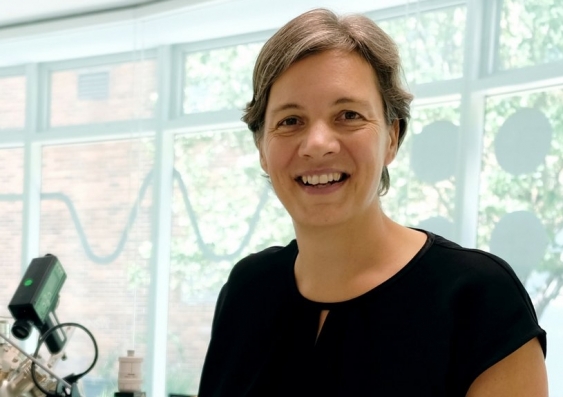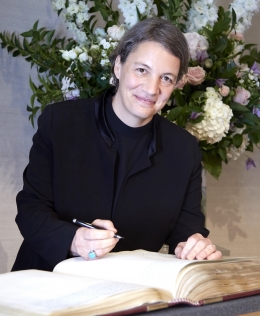UNSW Professor Michelle Simmons formally admitted to Royal Society of London
Professor Michelle Simmons, the Australian of the Year, joins nine other Australians admitted to the Royal Society this year.
Professor Michelle Simmons, the Australian of the Year, joins nine other Australians admitted to the Royal Society this year.

Trish Butera
External Relations
+61 419 482 184
p.butera@unsw.edu.au
UNSW Sydney Scientia Professor Michelle Simmons was officially admitted to the Royal Society of London last week, joining nine other Australian scientists selected to the world’s oldest independent scientific academy this year.
The Royal Society is a self-governing Fellowship made up of the most eminent scientists, engineers and technologists from the UK and the Commonwealth. Professor Simmons, the 2018 Australian of the Year, is believed to be the first female quantum physicist to join the academy in its 358-year history.
At the official Admission Ceremony in London on July 13, Professor Simmons was recognised for her contribution to the field of quantum computing and her pioneering work in atomic electronics. The events of the day culminated in the signing of the Royal Society Charter Book – a book of enormous historical significance.

Scientia Professor Michelle Simmons signs the Royal Society Charter Book.
The Charter Book is signed by each newly elected Fellow, Foreign Member and Royal Patron, and hosts signatures dating back to the Royal Society’s origins in 1660.
Professor Simmons’ signature will be part of this historic volume that features signatures from renowned scientists including Isaac Newton, Charles Darwin and Albert Einstein.
Professor Simmons’ election to the Royal Society was announced in May. As the Director of the Centre of Excellence for Quantum Computation and Communication Technology (CQC2T) at UNSW, Professor Simmons was quick to acknowledge the contributions of her team.
“This award is further recognition of the work that we are doing right here in Sydney,” Professor Simmons said. “I have been very fortunate over the years to have so many truly outstanding students and postdocs in my group at UNSW.”
Professor Simmons’ ground-breaking achievements have opened a new frontier of research in computing and electronics globally and have positioned her research team at CQC2T at the forefront of the space race of the computing age. Their latest development, recently published in Science Advances, has seen the team reach a new milestone in creating a quantum computer chip in silicon.